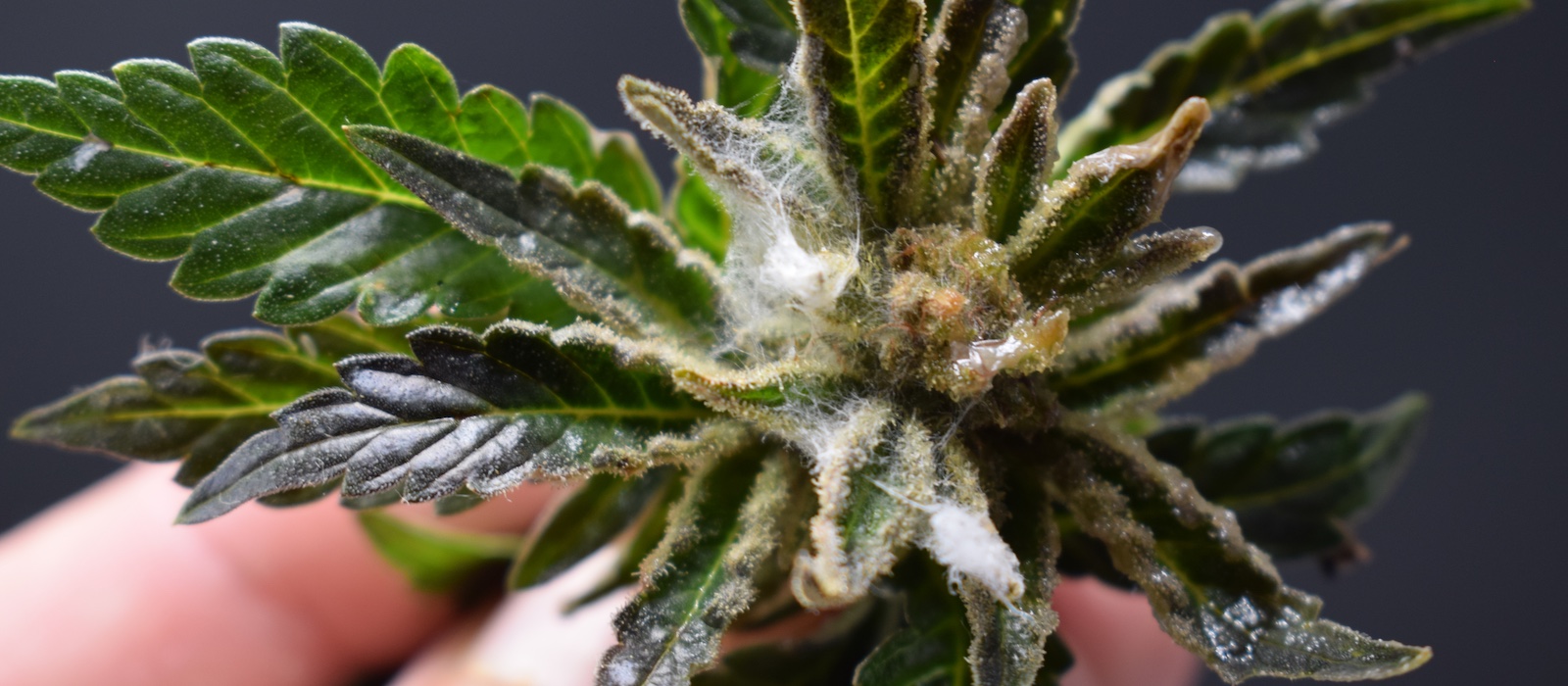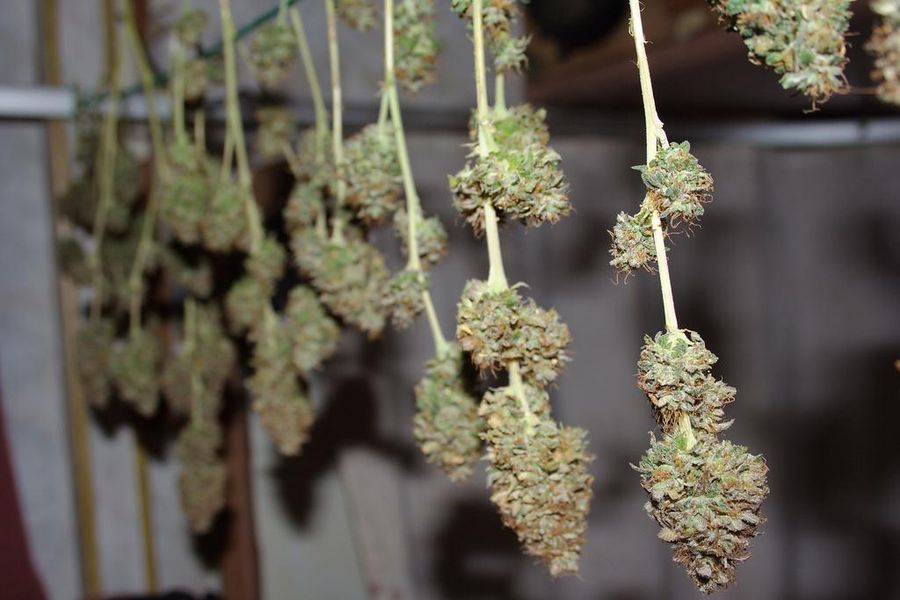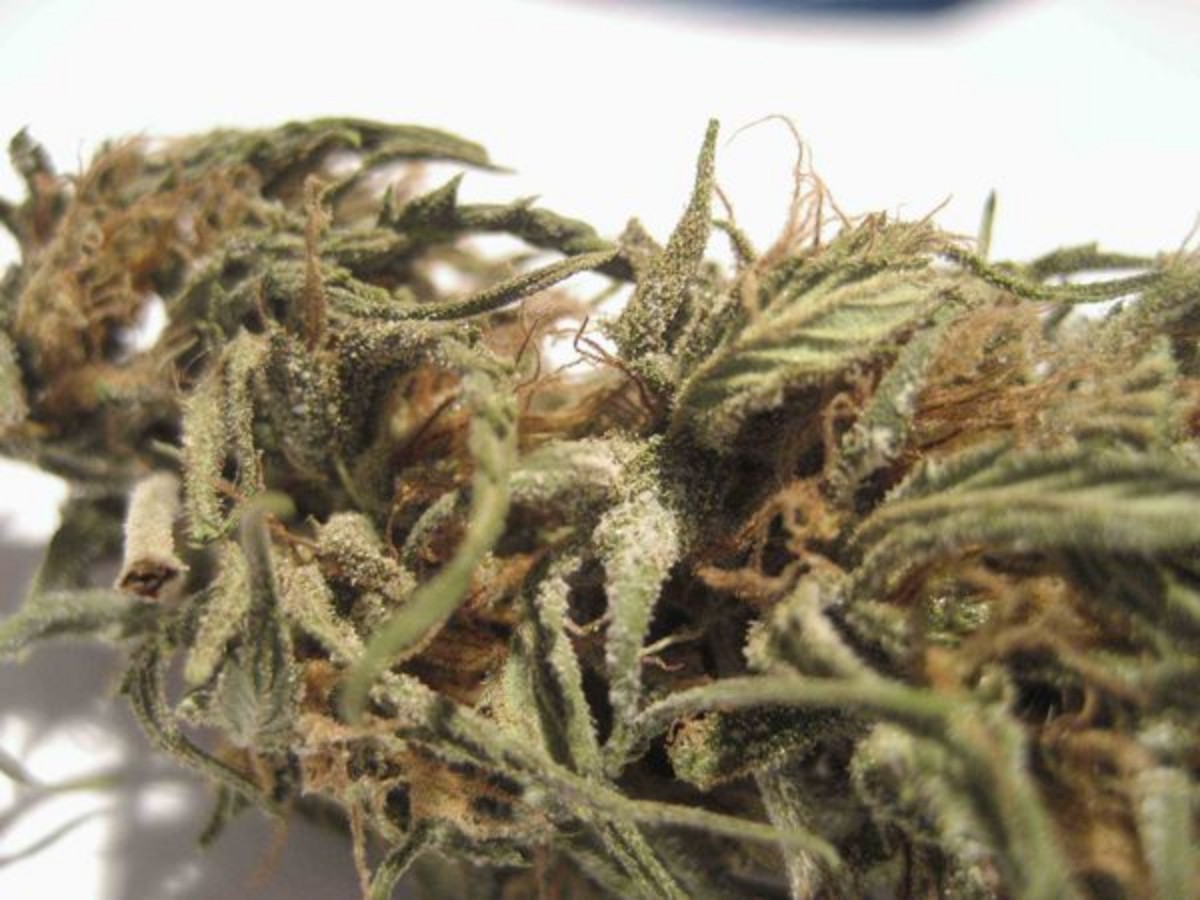- Whether it’s the first stage of the cultivation cycle, the flowering period, harvest time or the drying process, making sure your plants enjoy optimal environmental conditions is of the utmost importance.
- Humidity and temperature are key variables to consider, but aspects like pruning the plants and keeping the growing space clean shouldn’t be overlooked either.
- One thing is clear: if you want to prevent fungi from ruining your entire crop, you’ll have to remain on guard at all times.

It's an awful feeling. After months of hard work on your cannabis plants, a few days before harvest you realise something is going wrong. The buds have developed this sort of greyish, almost white dust layer and, suddenly, you start to fear the worst: mould. Unfortunately, this problem is not unique to harvest time, meaning that you'll have to remain vigilant also during the drying process, when aspects like humidity and poor ventilation can favour the growth of fungi just as easily as during the growing phase.
Fungal rot is one of the biggest problems you will face as a grower, as it has the potential to wipe out entire crops. Although it generally attacks the buds, the roots, stems and leaves can be affected too. Infested leaves will dry out rapidly, while stems will become brownish, more fragile and ulcerated. Similarly, the buds will become gradually paler and flabby to the touch, eventually drying out and becoming covered with a cottony growth.
Botrytis, the most common fungus
In order to prevent your plants from falling victim to a fungus like botrytis, you will have to take a number of preventive measures from the outset of the grow. These include the close monitoring of temperature and humidity, the main factors encouraging mould growth. The higher the humidity, the greater the risk, and the same happens with temperature.
Temperature and humidity are the main factors encouraging mould growth.
In fact, a large temperature difference between night and day will cause humidity levels to rise. These, however, are not the only climate factors that can contribute to a fungal infection, as wind and rain are common means of fungal spread. This is why cannabis plants that are grown in rainy areas are at a higher risk of becoming infected. And not just that. Even when you successfully eliminate a botrytis colony from a grow, the spores have the ability to remain dormant within the plants for years, waiting patiently until the climate conditions are again favourable and they can resume their growth.
Temperature and humidity, though, are not the only factors that can lead to a fungal infection. If you want your plants to stay healthy throughout the whole growing cycle, cleanliness in the growing space and during watering sessions must be a top priority. This is why you should try to make sure the growing area is spotless at all times. To that end, you can take steps like sterilising the growing tools and removing decomposing organic matter. And, of course, avoid touching the buds, as besides the growing equipment and the air, the fungus can also spread via the hands.
Pre-harvest precautions
The threat of mould increases as flowers mature. This is because when flowers swell during the last weeks of flowering, their burgeoning size hinders intra-floral ventilation. Remember that an infection during the final phase of flowering can force you to harvest your plants before the ideal day based on their maturation.
Likewise, because large buds are more prone to developing mould, many growers resort to topping in order to force a reduction in flower size. As a result, you will get buds that are smaller but also more abundant and, above all, healthy, instead of larger buds with higher humidity content and, thus, more susceptible to mould. Also, as bushy, leafy plants are generally more appealing to botrytis, another good tip is to use growing methods to train the plant to grow in your chosen shape, as this will help you avoid overly bushy plant structures.
Another key aspect to consider in order to avoid bud rot is watering, particularly during the last phase of flowering, when harvest is around the corner. Of course, this doesn't mean you can completely forget about temperature and humidity, but during this stage the focus should be on the amount of water you give your plants. So wait until the soil has almost dried out before rewatering - both indoors and outdoors - or until the pot is lightweight enough in indoor setups.
Control plant size through trimming: bushy, leafy plants are generally more appealing to mould.
Contrary to other stages of cultivation, when there's a wide array of methods you can use to fight fungal infections, in the run-up to harvest you'll be tied hand and foot. To give you an example, you won't be able to use any chemical products, as these have a very small safety margin and, if harvest time is close, you could be putting your health at risk.
Accordingly, you will have to be extra cautious, meaning that if a plant gets affected only partially, you will most probably have to give up on the whole specimen so that the fungus does not spread to the rest of your plants. If the infection is not too serious, you might feel tempted to remove just the infected parts and harvest the undamaged buds anyway, but remember that prevention is always better than cure.
On your guard also during the drying process
If you belong to the category of growers who underestimate the importance of the drying process on grounds that the worst part of the job is already over, you might be unpleasantly surprised to find that fungi can attack your plants even during this very last stage of the process. In fact, no matter how neat your work is in terms of watering, cleanliness and temperature and humidity control, mould growth can occur also during drying, ruining all the hard work of the season. This is why you need to be vigilant at all times.

Drying involves eliminating the humidity contained in the buds. An easy way to ensure this is to hang the flowers upside down on a clothesline allowing enough space so that the branches don't come into contact with one another. The key here is to control the temperature - ideally, set to 20ºC - and the humidity - set to 50% where possible - as this will ensure botrytis is kept at bay.
Because humidity is the worst enemy to cannabis growers, humidity control equipment is an absolute must-have in every grow room. So provided you can afford it, do not hesitate to buy a humidifier or dehumidifier, the choice of which will depend on the climate conditions of the drying room. Considering light breaks down THC, this should be a dark space in order to preserve quality.
To cut it short, when it comes to keeping mould at bay, it all comes down to making sure that all the variables involved fall within the required parameters. This is particularly true for temperature and humidity, the main factors leading to mould growth during flowering and drying. So remember to take all the necessary precautions and don't get overconfident. Your plants are sure to appreciate the effort.




Comments from our readers
There are no comments yet. Would you like to be the first?
Leave a comment!Did you like this post?
Your opinion about our seeds is very important to us and can help other users a lot (your email address won't be made public).